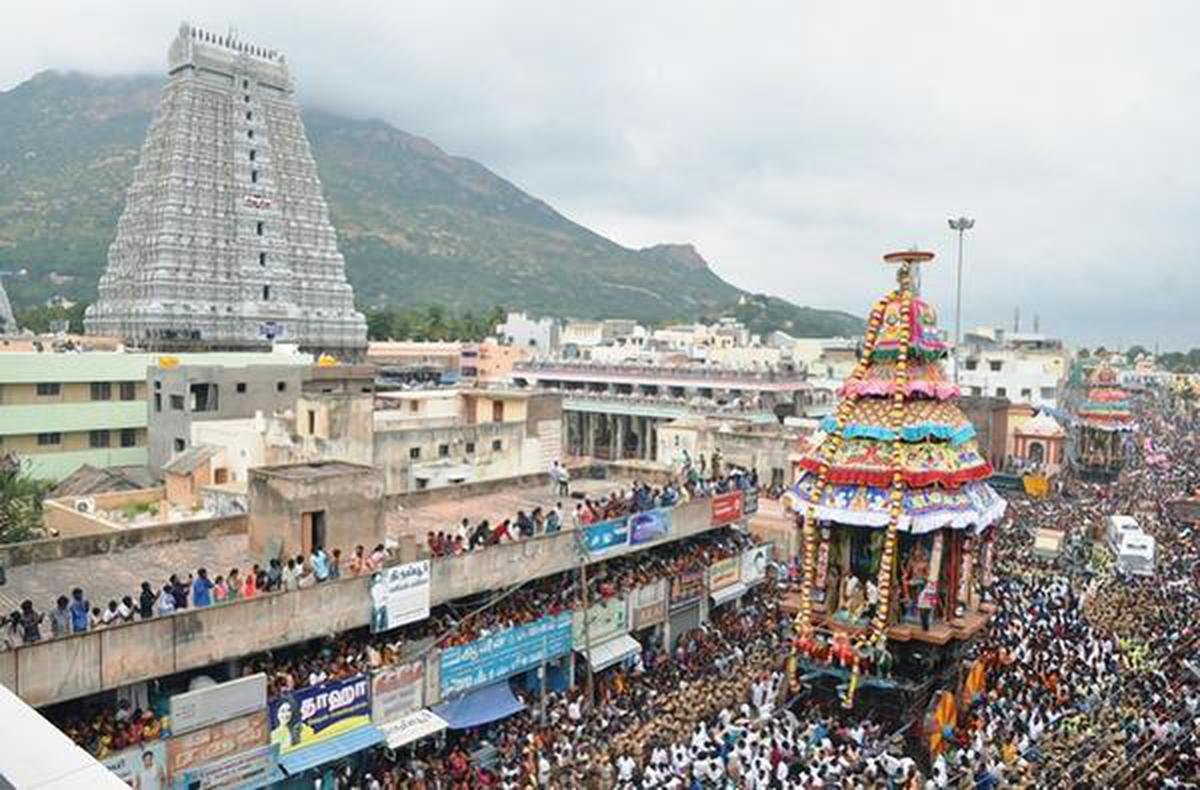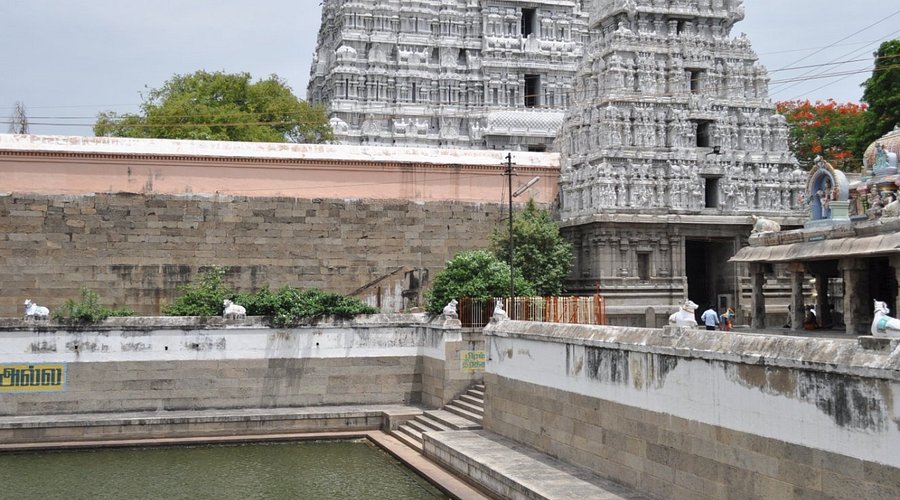
Table of Contents
ToggleThiruvannamalai Temple – A Glorious Saga of Spirituality and Heritage
Nestled at the foot of the majestic Annamalai Hills in Tamil Nadu, the Thiruvannamalai Temple—also known as the Arunachaleswarar Temple—stands as a timeless testament to India’s spiritual soul and cultural richness. Dedicated to Lord Shiva in the form of Arunachaleswarar, this ancient temple is not just a place of worship but a divine force that has attracted saints, seekers, and devotees from across the globe for centuries.
The temple’s origins are steeped in legend, most notably the sacred myth of Shiva manifesting as a colossal pillar of fire to humble Brahma and Vishnu, a tale that symbolically marks Thiruvannamalai as one of the Pancha Bhoota Sthalams, representing the element of fire (Agni). The temple complex is one of the largest in India, sprawling over 25 acres and housing majestic gopurams (towers), intricately carved halls, ancient shrines, and a sacred tank.
The Raja Gopuram, soaring to a height of over 200 feet, dominates the skyline and embodies the architectural brilliance of the Vijayanagara dynasty. But what truly sets Thiruvannamalai Temple apart is its intense spiritual energy. Revered saints like Sri Ramana Maharshi made this place their spiritual home, meditating in the caves of the Annamalai Hills and spreading the light of inner realization to countless followers. Every full moon, hundreds of thousands of devotees undertake the sacred ritual of Girivalam—a 14-kilometer circumambulation of the hill barefoot, chanting Lord Shiva’s name and seeking blessings for peace, health, and liberation.
The temple comes alive during Karthigai Deepam, its most significant festival, when a massive flame is lit atop the Annamalai Hill, symbolizing the eternal light of Shiva. This grand event, visible for miles, draws pilgrims in lakhs, turning the town into a sea of devotion and spiritual fervor. Beyond its religious aspect, the temple also serves as a living museum of Tamil art, sculpture, and heritage. Each pillar, corridor, and mandapa (hall) tells a story—etched in stone—of dynasties, traditions, and divine legends. The temple’s layout is a symbolic journey from the outer material world to the inner sanctum of spiritual realization.
It encourages not just ritual worship, but deep meditation and self-inquiry. For the spiritually inclined, Thiruvannamalai is not just a destination—it is a transformative experience. The serene vibrations, the chants of ancient hymns, the rhythmic beating of temple drums, and the wafting fragrance of camphor and incense create a deeply immersive spiritual atmosphere. It is said that merely visiting the temple with sincere devotion can burn away karmic burdens and awaken higher consciousness.
The town of Thiruvannamalai has grown around the temple, yet it retains its tranquil, old-world charm. Ashrams, yoga centers, and meditation retreats dot the town, attracting spiritual aspirants from around the world. The temple not only anchors the local culture and economy but also serves as a beacon of India’s enduring spiritual wisdom. In a rapidly modernizing world, the Thiruvannamalai Temple continues to uphold the values of devotion, self-realization, and inner peace. Its grand towers and sacred hill remain eternal symbols of the fire within—the divine light that guides every seeker toward the truth.

Sacred Significance and Spiritual Practices
Thiruvannamalai is considered one of the Pancha Bhoota Sthalams, representing the element Agni (Fire). The others represent Earth, Water, Air, and Space.
The temple’s deity is Arunachaleswarar (Lord Shiva), with his consort Unnamulai Amman (Parvati). Devotees believe that a visit to this temple and a circumambulation of the Arunachala Hill (Girivalam or Giri Pradakshina) washes away sins and grants spiritual upliftment.
The Giri Pradakshina path is around 14 kilometers, undertaken barefoot on full moon nights, especially during Karthigai Deepam and Pournami (full moon).
Festivals and Celebrations
The temple is renowned for its grand festivals, attracting millions of pilgrims:
Karthigai Deepam (November–December): Lighting of the massive beacon atop the hill
Girivalam (monthly Full Moon walk): Spiritual journey around Arunachala Hill
Maha Shivaratri: All-night worship and bhajans
Chitra Pournami, Panguni Uthiram, and Pradosham are also celebrated with devotion

Legacy of Saints and Seekers
Thiruvannamalai is closely associated with several saints, most notably Sri Ramana Maharshi, who attained enlightenment at the foot of Arunachala. His ashram near the temple still attracts seekers, yogis, and spiritual aspirants from across the globe.
Other saints like Arunagirinathar, Guhai Namasivaya, and Seshadri Swamigal also contributed to the temple’s spiritual wealth.
Final Thoughts
The Thiruvannamalai Arunachaleswarar Temple is not just a religious monument—it is a living symbol of Tamil Nadu’s spiritual essence, architectural mastery, and timeless devotion to Lord Shiva. For pilgrims and travelers alike, it offers an unforgettable experience of divine presence, peace, and power rooted in ancient Indian wisdom.







